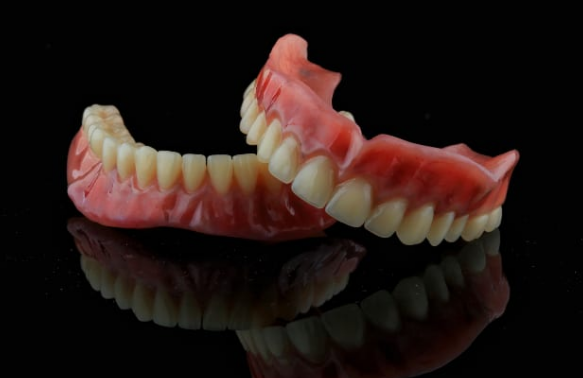10.Aggrippina and Lollia Paulina’s Golden Teeth
The Lollia Paulina case is commonly known as the first use of forensic dentistry to identify a body. Some even claim that it is the first use of forensic science in general. Either way, human teeth played an important role in its resolution. The short version is as follows: the Roman noblewoman Agrippina the Younger was seeking to marry the Emperor Claudius but she had a rival in the noble Lollia Paulina. Agrippina won her contest and married the emperor, but she did not spare Lollia. Agrippina had Lollia accused of witchcraft, found her guilty, exiled her, had her property confiscated, and even ordered Lollia to commit suicide. As proof of suicide, a guard brought Lollia’s severed head back to Agrippina, but her features had been distorted and marred by death, dismemberment, and travel. To identify the body, Agrippina was forced to rely on forensic dentistry. She knew Lollia’s rotten teeth had been partially replaced with gold. Agrippina’s suspicions were confirmed by opening the mouth of her head. This act is the supposed first use of teeth to identify a body.
9.Reverend George Burroughs
The Salem witch trials of 1692 are a dark and twisted reflection of early American justice. Similarly, they include a dark and twisted use of teeth in criminal prosecution. Among many other innocents, the Reverend George Burroughs was accused of witchcraft and joking with the devil. His accusers, actually spiteful personal enemies, presented many presumptive evidence against Burroughs. One was a bite mark on a young victim that was said to have made in a diabolical attack. His teeth were visually compared to the victim’s arm, and this was enough for Burroughs to be convicted and hanged. He would later be exonerated posthumously, but his trial marked the first time in the (eventually) United States that bite tests were used to help “solve” a case.
8.Jesse Timmendequas and Megan’s Law
Today, every state in the US benefits from the Megan Act (which is a federal law and many state laws), which makes information about sex offenders, including names, faces, and addresses, available to the public. As her name implies, the law dates back to a case involving a young woman named Megan Kanka, who was raped and murdered by her neighbor, a man named Jesse Timmendequas. Fortunately, Timmendequas was captured and tried. One of the key pieces of evidence that helped convict him (and there were many) was a bite Megan had left on Timmendequas’ hand while he bravely fought. Once again, teeth played a role in the creation of our modern system of child protection legislation.
7.Thomas Maupin’s Dentures

In 2001, a young woman (left anonymous) was walking on an empty stretch of highway in Memphis, Tennessee, when she was assaulted. An unknown man stabbed her, raped her and fled from her. Fortunately, the woman survived, reported the crime, and police gathered evidence at the scene. Unfortunately, the man was not identified, that is, until ten years later. One strange piece of evidence collected at the scene was a pair of false teeth. For some reason, they had initially been overlooked, but when they were re-examined all those years later, it turned out that they belonged to the attacker. The attacker had written his name inside the false teeth. This allowed the police to find the attacker, Thomas Maupin, and convict him of his crime. Although it took a frustrating time, at least the (false) teeth came out.
6.Fredrik Fasting Torgersen

The case of the Norwegian Fredrik Fasting Torgersen is one of the most controversial cases in modern history. It serves as a stark reminder that bite mark analysis can sometimes be an erroneous and misleading test. Torgersen was convicted of the rape and murder of a girl in 1958, despite very little evidence that linked him to the victim, established motive, or placed him at the crime scene. Perhaps the greatest evidence for the defense was that of an alleged expert witness who claimed that a bite mark found on the victim’s chest “with complete certainty pointed to Torgersen as the murderer.” The bite mark, and the use of bite marks in general, has been called into question in subsequent years. Torgersen was sentenced to life in prison based on almost nothing more than a possibly incomplete bite. Fortunately, he was released after 16 years. However, many members of the Norwegian community, including several high-profile scientists and lawyers, have protested the apparent judicial error of the case in the 60 years since then.
5.Bundy’s Big Bite
Ted Bundy, the charismatic killer, is one of the most famous serial killers in history. Bundy confessed to murdering 30 people during the 1970s. He also admitted to kidnapping and raping many more victims. Bundy was smart and left little evidence for investigators to use against him. The case against Bundy took years to build and his trial took years more. Although we’ve already discussed the relative incompleteness of the bite mark analysis, it was crucial in helping drive Bundy away. During one of Bundy’s most daring sprees, he attacked several members of the sorority, leaving a deep bite on the left buttock of one of the women. Forensic dentists Richard Souviron and Lowell Levine made molds of Bundy’s teeth and matched them to the victim’s bite mark, helping seal the case against the monstrous Bundy and ending his reign of terror.
4.Sharon Carr’s Cheetos Teeth
In early 2001, a woman called 911 when she heard the sounds of an intruder in her home. The woman was alone with her two children and concerned for her safety. After the intruder spent time in the house, they noticed that she was busy and fled through an open window. When police arrived, they confirmed the intruder was gone, although they had left evidence, including a bottle of water and an empty bag of Cheetos. Police believe the intruder left the items as they fled out the window. While searching the property, police found the intruder, Sharon Carr, hiding in nearby bushes. Police were able to confirm that Carr was the intruder due to fresh Cheetos powder coating her teeth. Another victory for tooth-based evidence. A strange little victory, but a victory nonetheless.
3.Ray Krone Overturned
Ray Krone’s 1992 conviction for murder and subsequent labeling as the Snaggletooth Killer is one of the most famous examples of evidence mishandling, wrongful conviction, and unreliability of analysis of bite marks as evidence. Like Fredrik Fasting Torgersen, there was little evidence against Krone other than an expert witness who claimed that Krone’s bite pattern matched the bites found on the victim’s body. Unlike Torgersen, Krone was at least lucky enough to be exonerated through DNA tests, which also identified the real killer: a repeat sex offender named Kenneth Phillips. Since then, Krone has worked with the Innocence Project and campaigned against the death penalty, in part because the new available DNA evidence is necessary to rule out potentially incorrect convictions, just as it did with him.
2.John Wayne Gacy
Like Ted Bundy, John Wayne Gacy is one of the most famous serial killers in history, remembered for the brutality and scope of his crimes, as well as the clown persona he adopted, which earned him the full award. Killer Clown nickname. Gacy killed at least 33 young men, many of them raped and tortured. The problem was finding the bodies of Gacy’s many victims and then positively identifying them. The police recovered twenty-six victims from the crawl space of Gacy’s home. Dental records provided twenty-three of their identities. In the many years since many other Gacy victims were found, most in the Des Plaines River, and many of them have been identified through dental DNA.
1.Josef Mengele Identified
Josef Mengele is one of the most evil human beings in history. Thanks to his teeth, we can be sure of his death. As a high-ranking Nazi SS officer, Mengele led an inhumane medical experimentation program with prisoners at the Auschwitz concentration camp, earning him the nickname Angel of Death. When it became clear that he, along with fellow Nazis and fascist allies to him, had lost the war they had started, Mengele fled to Argentina to start a new life in hiding. He continued his life by running away, fleeing to Paraguay, then to Brazil. He was always assuming new identities, until 1979, when he suffered a stroke while swimming and drowned. After decades of searching for the missing monster, they finally found Mengele, albeit only as a corpse with a different name. It was up to Brazilian and American dentists to prove his true identity. By comparing X-rays taken of the corpse’s skull with those taken by a Brazilian dentist who had treated Mengele in the years before his death, American dental scientist Lowell J. Levine was able to say that the remains “can now be identified as Josef Mengele with an absolute certainty. “The teeth were what finally proved that the Angel of Death no longer existed.





